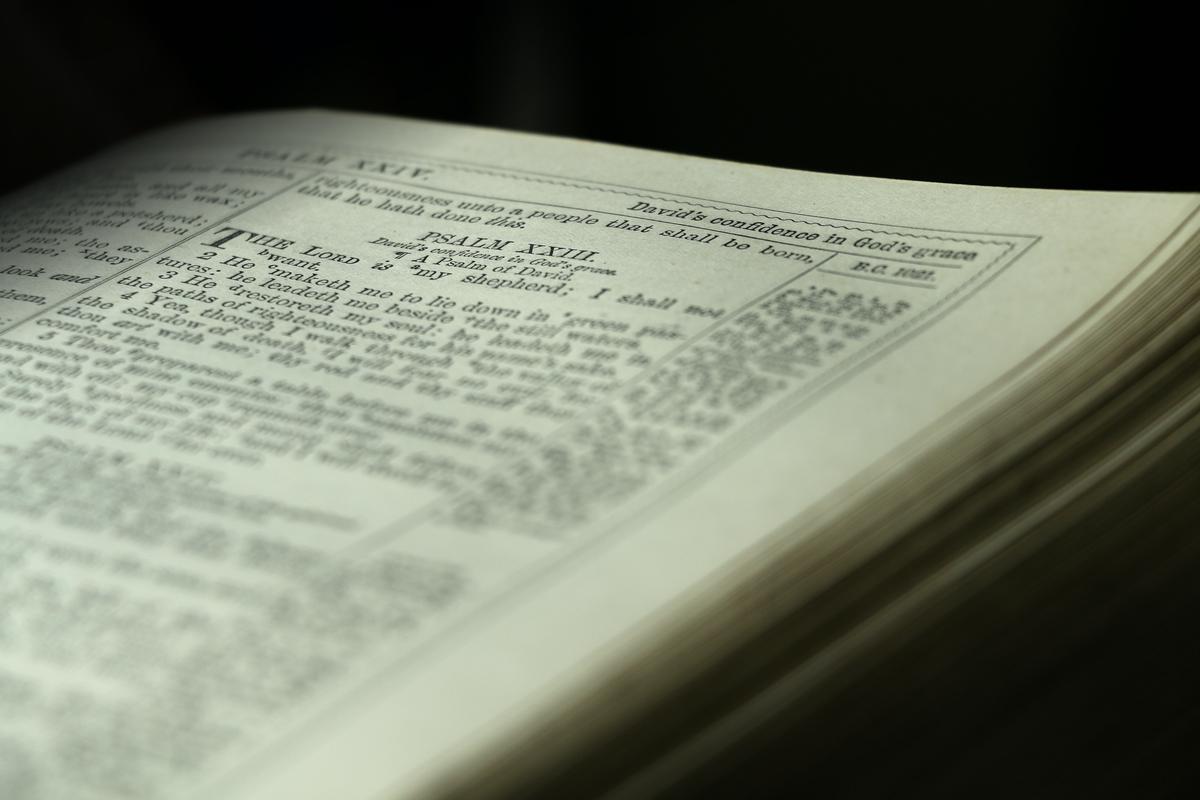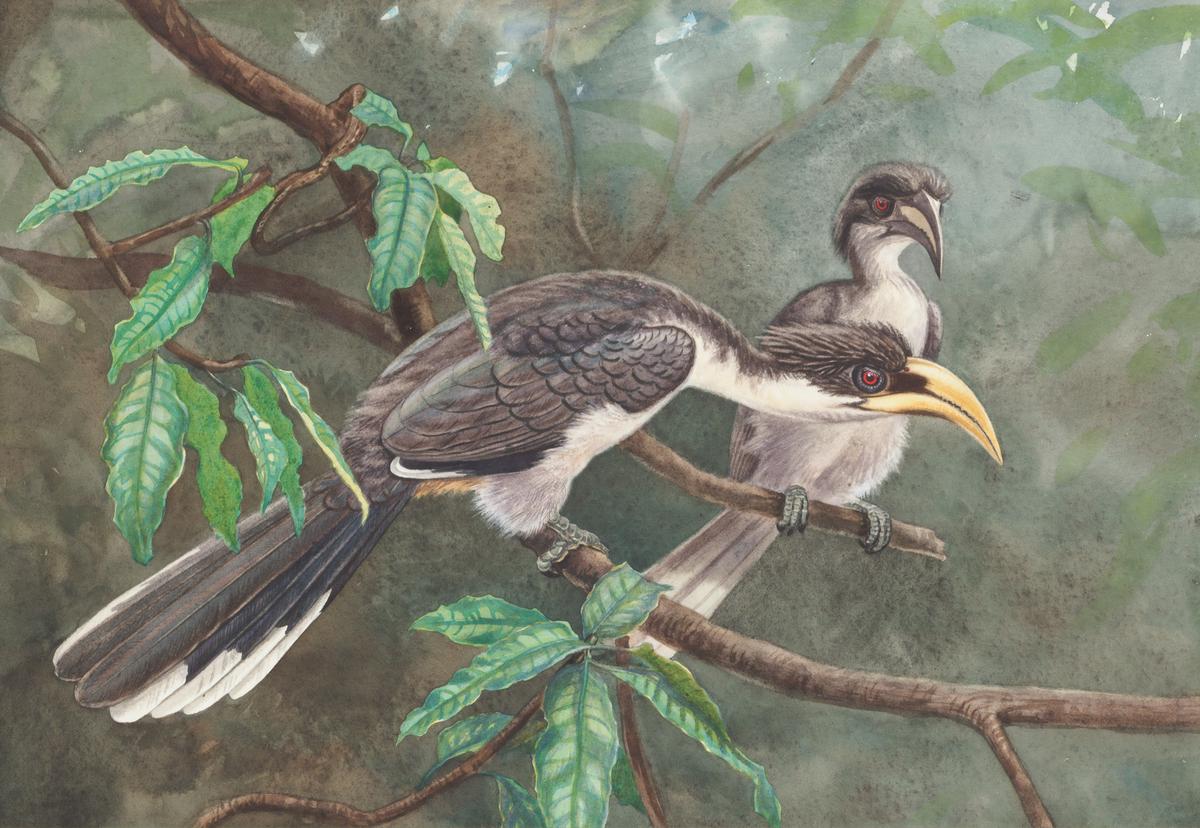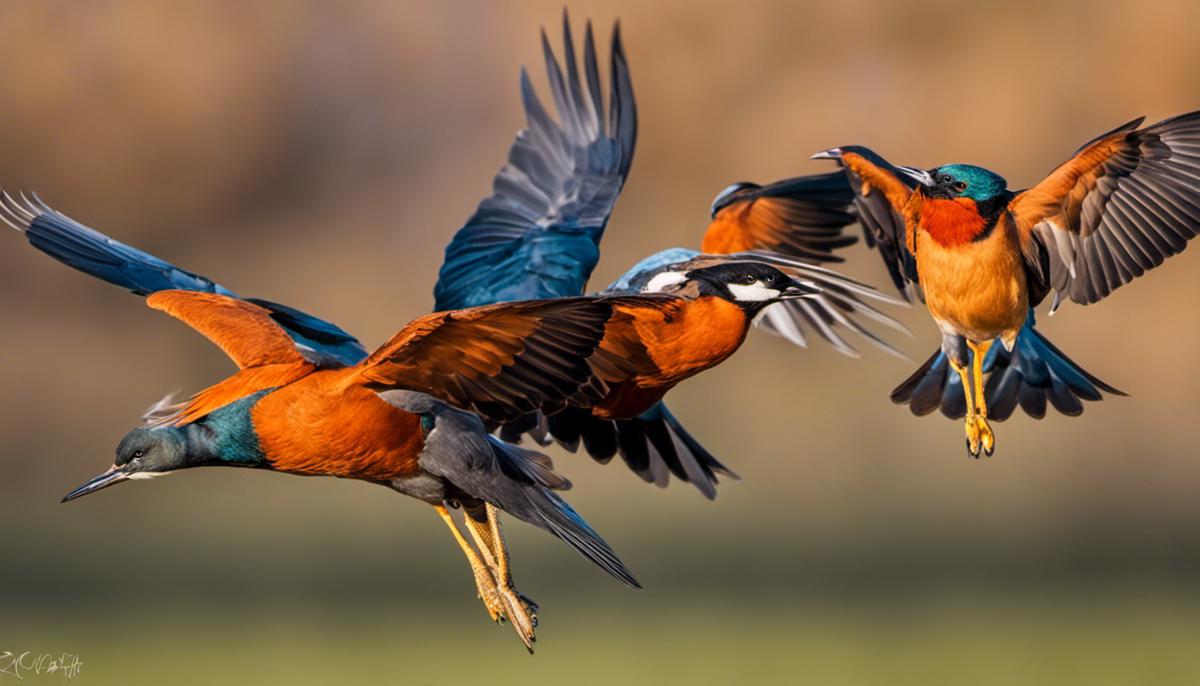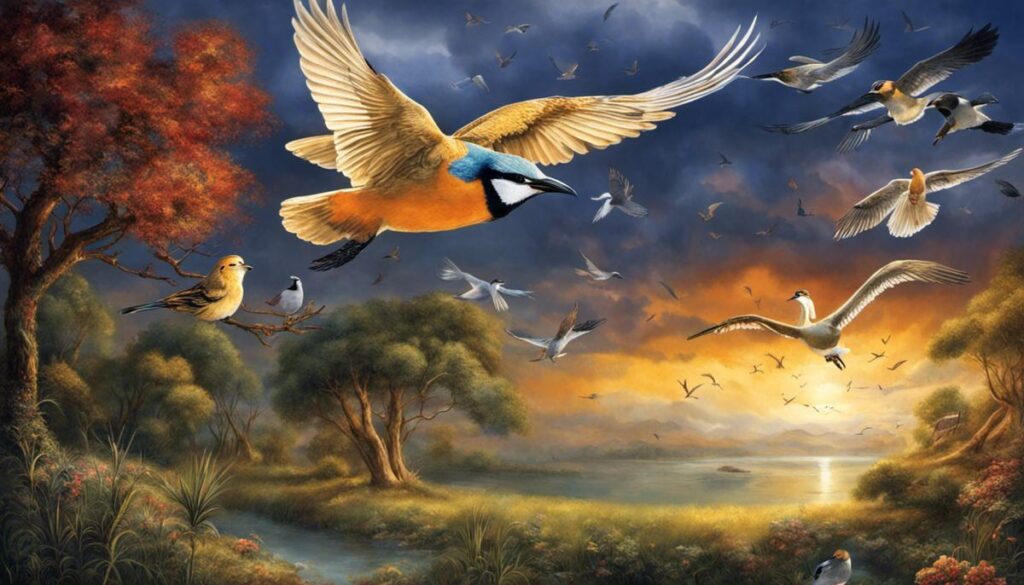Paying homage to the spiritual lineage of humanity, we turn to sagely texts that have served as beacons of wisdom and understanding across generations. The Bible, a profound compendium of divine revelations and human experiences, presents a vast landscape of symbolic narratives just waiting to be explored. Birds, an integral part of creation, hold a special place in these narratives, often associated with messages of divine guidance, prophecy, or spirituality. This exploration leads us into the rich tapestry of biblical symbolism, specifically focusing on the role and significance of these winged creatures in dreams. By journeying through the interpretive complexities of these biblical symbols, we gain invaluable insights into the meaning of dreams featuring birds then, and its bearing on how we understand such dreams now.
Symbolic implications of birds in biblical texts
Exploring Avian Symbolism in Biblical Texts and its Reflection in Dream Interpretations
The intricate blend of theological symbolism and the practice of dream interpretation remains a fascinating area of exploration and interpretation. One of the most commonly recurring symbols is that of birds, with their presence serving multiple roles across different biblical narratives. Bustling with potential meaning, the scope of avian symbolism varies from denoting spiritual ascension to symbolizing prophetic omens.
In the Hebrew Bible, birds dovetail with divine communication. Consider the dove that Noah releases after the Great Flood in Genesis 8:11. The return of the dove with an olive branch, itself a symbol of peace and new beginnings, signified the end of God’s wrath and safe passage for all life on Earth. Similarly, when God promises to renew his covenant with Abraham in Genesis 15:9, the offering to God includes a turtledove and a young pigeon, highlighting birds as intermediaries in divine-human interaction.
The biosymbolism extends into the New Testament as well. The prominent story of Jesus’ baptism – celebrated in Mark 1:10 – describes the ‘heavens parting and the Spirit descending like a dove on Him’. This pivotal moment introduces the Holy Spirit in the form of a dove, reinforcing birds as conduits of divine manifestation, grace, and tranquility.
These biblical-based understandings deeply influence the interpretation of bird symbolism in dreams. Taking cues from the biblical context, dream theorists typically regard the appearance of birds as an amplification of spiritual ascension, peace, or revelation. For example, dreaming of a dove generally indicates tranquility, harmony, or an impending positive message, whereas an eagle may denote spiritual protection or transcendence.
However, the bible doesn’t consistently idealize birds. In certain verses, birds serve as indicators of destruction or spiritual corruption. Revelation 18:2 metaphorically refers to the ruined Babylon as ‘a haunt for every unclean bird.’ In dreams, crows or vultures, often linked to this verse, indicate inner turmoils or warnings of near peril.
Moreover, specific bird behaviors within the dream could influence the interpretation. A bird in flight might symbolize spiritual elevation, while a bird diving to the ground might have cautionary implications. Drawing parallels from biblical instances, theologians and dream interpreters operate within a complex matrix of symbolism, with suspense and intrigue regarding the exact implications every time a bird appears in a dream.
In conclusion, bird symbolism manifests powerfully within both biblical narratives and dream interpretations. While the exact meaning varies depending on the species and behavioral context, birds undeniably serve as potent vehicles for theologically rich messages and have a profound impact on dream theory. As we continue to delve further into the interpretation of dreams based on biblical symbolism, the humble bird as our guide serves as a truly enlightening entity for faith-based narratives and psychological explorations.

Case Studies: Biblical incidences of dreams involving birds
Deepening our understanding of avian representations in biblical dream narratives necessitates examining the connection of these portrayals with particular biblical accounts. The dream of Pharaoh in Genesis 41 illustrates this point precisely. The dream is composed of seven fat and seven lean cattle, followed by seven plump and seven crumbled ears of grain. Although birds are not directly portrayed, avian features emerge in the interpretation shared by Joseph. The dream’s narrative portrays the birds eating the lean ears, acknowledging birds as creatures capable of change and transformation.
Swapping deities with birds and vice versa represents another significant aspect of theological narratives. In 1 Kings 17, a raven is used by God to feed Elijah during his stay in the Kerith Ravine. The raven, a bird ordained by Levitical law as unclean, was transformed into a provider of sustenance, demonstrating a divine agency and intentionality.
Similar divine intervention is reflected in the book of Daniel, where King Nebuchadnezzar dreams of a gigantic tree sheltering all the earth’s creatures, including birds. The dream is interpreted by Daniel to represent Nebuchadnezzar’s might, but significant to us is the bird’s underlying cultural symbolism in the context of kingdoms, empires, and power dynamics. It showcases how such symbols in dreams can inform interpretations, hinting at profound political and social implications.
Moreover, the dream of Peter in Acts 10 showcases birds as vectors that elicit a change of perspective and attitude. A heavenly sheet containing all kinds of birds representing all citizens of the earth descends to Peter, signaling an instruction that what God has made clean, no one should call impure – a pivotal point in opening the message of Christianity to the Gentile world.
Delineating the role of birds along with these narratives, it becomes evident that they are not mere feathery beings invoked for their natural attributes but are active agents conveying divine messages and impending societal transformations underlining the integral part they play in the schematic understanding of holy scripts.
Finally, when considering the Revelation’s depiction of the fall of Babylon, a city described as a “habitation of devils, and the hold of every foul spirit, and a cage of every unclean and hateful bird” (Revelation 18:2), it becomes clear that specific bird representations in biblical dream narratives not only underscore impending divine messages but also reflect socio-political and spiritual shifts, adding depth to both theological and psychological discussions of such narratives. A meticulous examination of these biblical accounts amplifies the understanding of the intricate relationship between the natural world and divine revelation orchestrated through dream narratives.

Photo by mcgilllibrary on Unsplash
Contemporary Implication: Interpretation of birds in dreams today
As we delve further into the extensive and multifaceted subject of avian symbolism and biblical influences on contemporary dreams, it grows imperative to highlight another crucial role that birds play in the religious realm: carriers of divine nourishment. In 1 Kings 17, the prophet Elijah is fed by ravens in the wilderness by the command of God, showcasing birds as divine agents. In this narrative, the birds, seemingly insignificant creatures, become conduits of nourishment, survival, and divine intervention. Such narratives, deeply ingrained within our spiritual subconscious, could influence dreams where birds take on a role of providing sustenance or assistance in times of struggle or need.
When delving into biblical dream narratives, a striking example to consider is Pharaoh’s dream in Genesis 41, involving fat and lean cows and healthy and blasted ears of grain. Although no birds appear directly in this dream, its interpretation by Joseph is pivotal in biblical dream symbolism. The principle that dreams can contain cryptic messages or foreshadows about the future might inform contemporary dreams featuring birds, given their rich symbolism throughout biblical lore.
Moreover, the societal and political context in which biblical writings and interpretations have been formed cannot be put aside. In many ancient cultures, including the Hebrew culture in which the Bible was largely written, birds often carried political or societal symbolism. This symbolism subtly but undoubtedly permeates the Bible and, by extent, can influence the roles and meanings birds take in contemporary dreams. As an example, doves and eagles often symbolize peace or military power, respectively.
A shift in perspective or attitude, often marked by the appearance of a bird, is another frequently noted theme. The rooster’s crowing, signaling Peter’s denial of Jesus, underlines this dimension of change brought about by a bird’s presence in the narrative. This potent symbolism might color contemporary dreams where birds may signify a realization or profound transformation.
Arguably one of the most potent portrayals of birds lies within the last book of the New Testament, Revelation. Here, birds, particularly eagles and vultures, are used to signify impending spiritual and socio-political shifts. Such a portrayal might ripple down into our dream fabric, where the appearance of a bird, especially in larger numbers or displaying unusual behavior, might signify changes on the horizon.
Finally, the exploration of avian symbolism opens up a unique lens to view the intricate relationship between the divine and natural world. Birds, belonging to earth yet capable of soaring into the heavens, serve as a powerful nexus between terrestrial and celestial realms. This intermediary status further enhances their symbolic potency in dreams, often becoming harbingers of divine messages or manifestations of supreme power.
In this academic venture, one thing is made abundantly clear: the depth and variation of avian symbolism in biblical text form a rich tapestry of meanings that can, and do, permeate our dreams. Biblical interpretations are not rigid or unchanging and continue to influence our spiritual and subconscious landscapes, an enduring testament to the profound interconnectedness of our spiritual, psychological, and natural worlds.

As our exploration of the biblical meaning of birds in dreams winds down, we discover a rich convergence of ancient wisdom and contemporary understanding, symbolically draped in the idea of a bird. In examining this topic, we delve into the depths of sacred texts, draw out nuances of biblical narratives and their contemporary interpretations, while also revealing the astonishing continuity of these age-old symbols in our modern consciousness. In this complex interplay of ancient ideas and modern subconscious, the symbolic language of dreams featuring birds becomes a transhistorical, transcultural dialogue, inviting each of us into a deeper understanding of ourselves, both as individuals and as part of the collective human experience.







